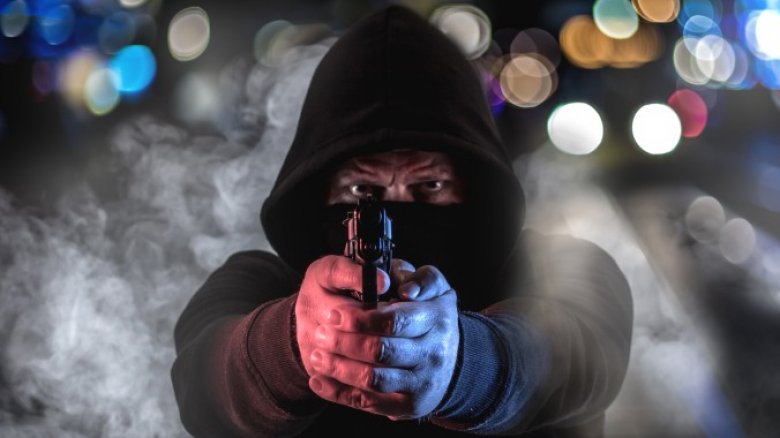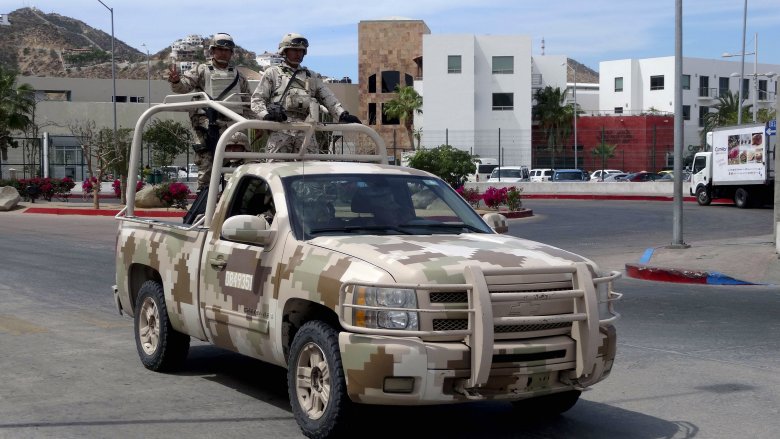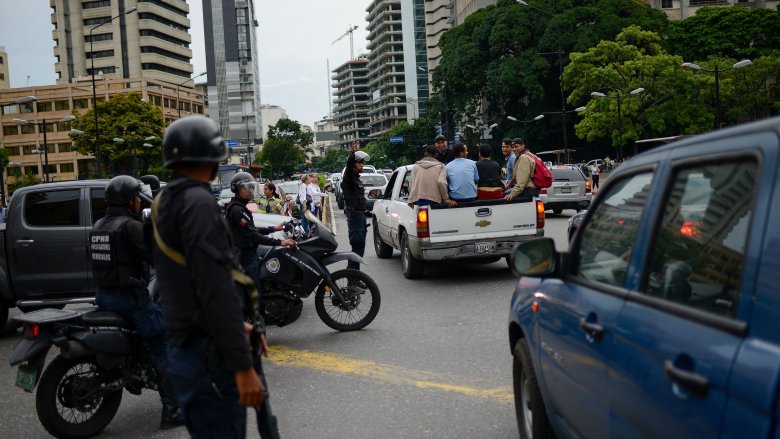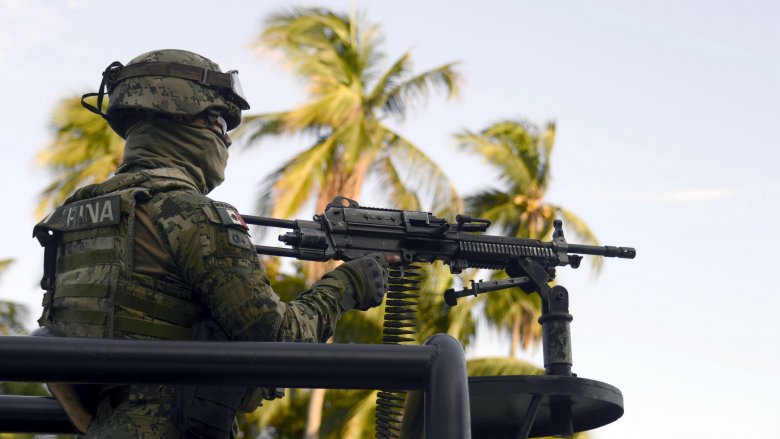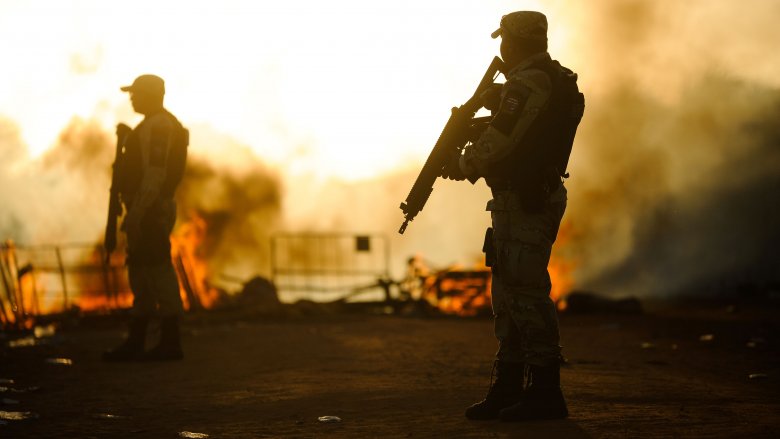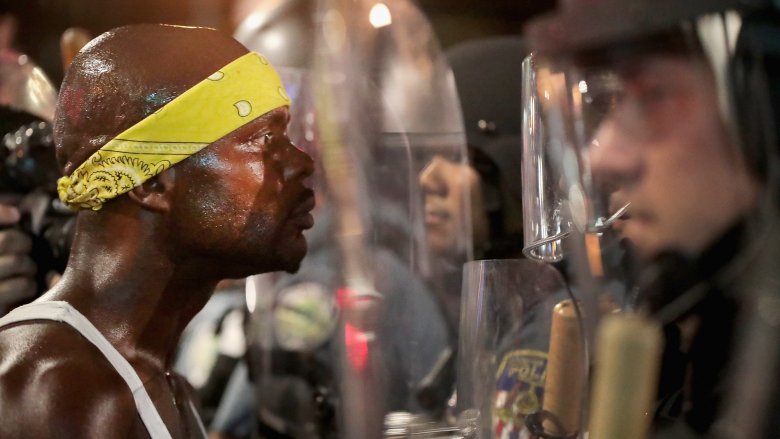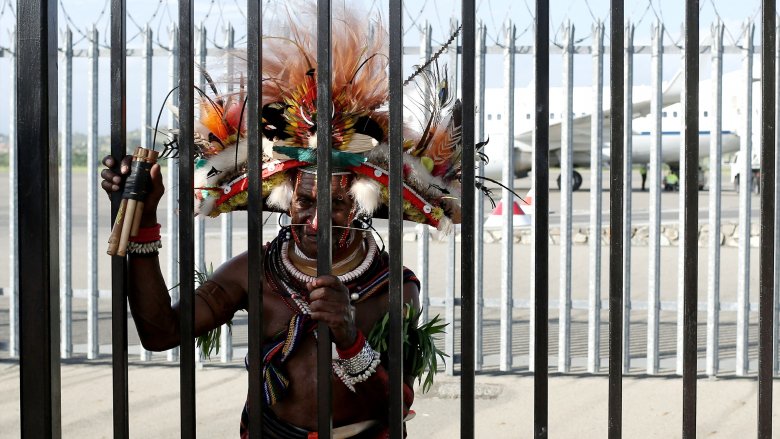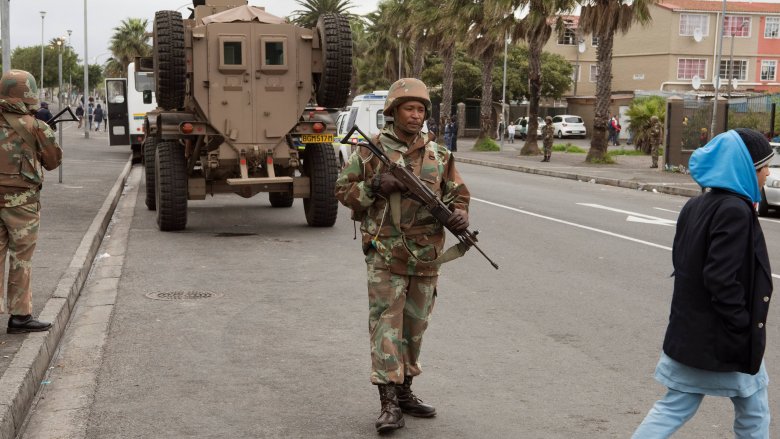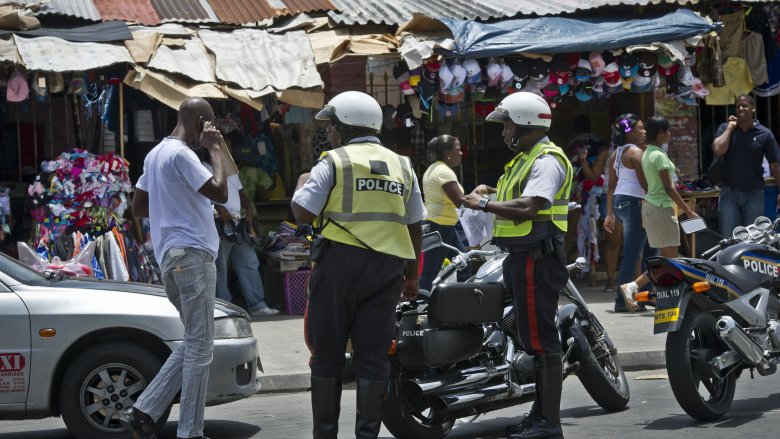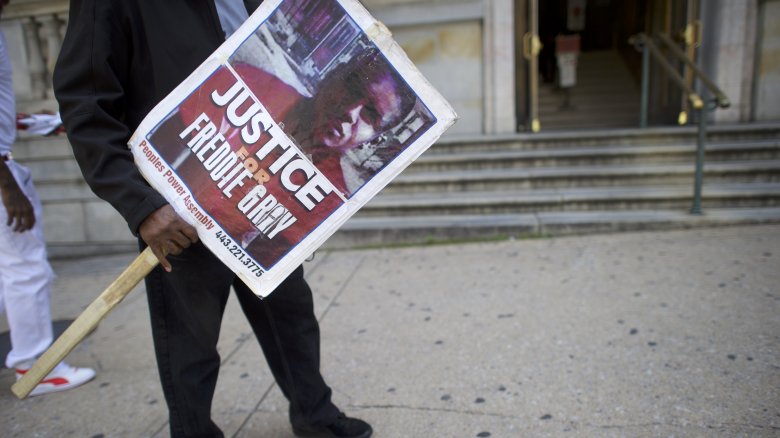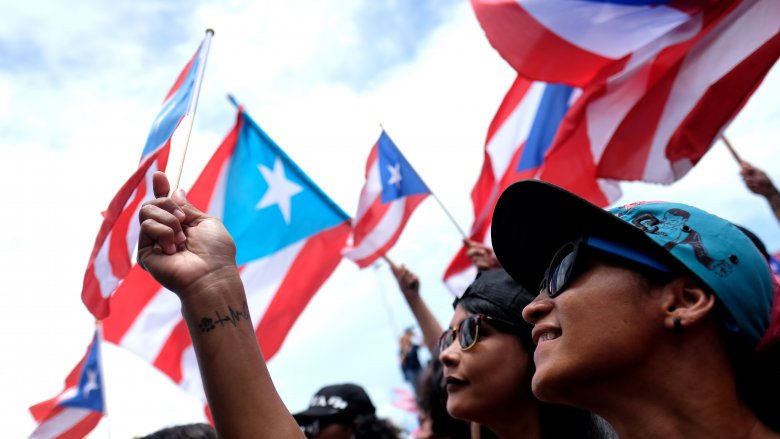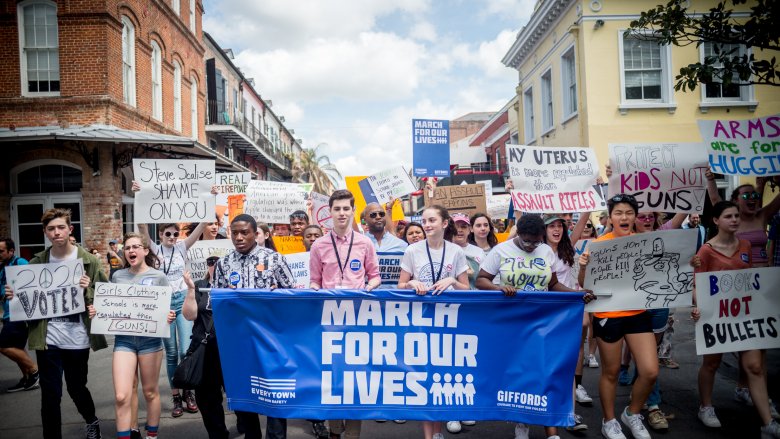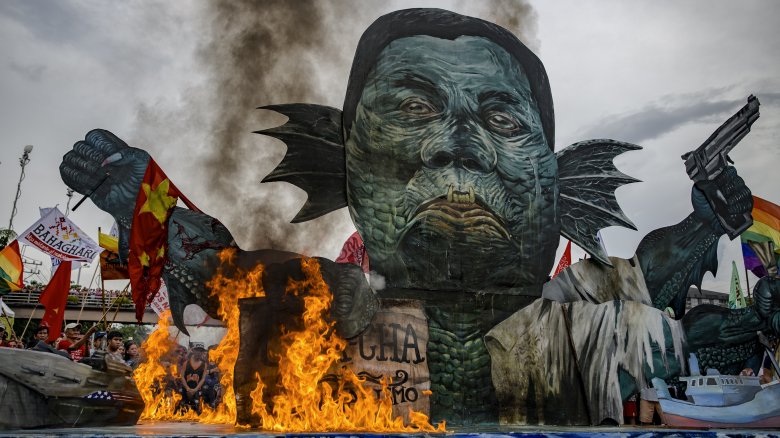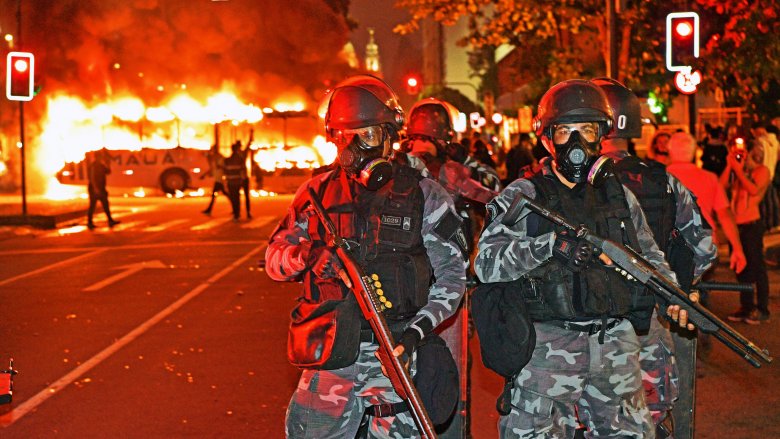The World's Most Violent Cities You Should Avoid
Violence has been a way of life for a long time, ever since that first person picked up a rock and realized they could use it to hit someone. The reasons for violence are almost as endless as the acts, and it's an undeniable part of the human condition.
It's all over the world and can happen anywhere, at any time, but cities have long been linked with the worst of it. There are a ton of statistics out there — highest murder rates, most gun crime, biggest drug problems, and highest number of arrests. But statistics only tell a part of the story, and sometimes, the best way to describe what places you should stay away from is to look at the human side of the violence, the stories behind the numbers. When you start looking at that, you find that some of these cities have fascinating, frightening problems behind all the bloodshed. From third world towns to major North American metros, these are some of the most violent cities you should definitely avoid.
This city isn't a paradise playground anymore
After World War II, Los Cabos' popularity as a destination holiday spot skyrocketed, in large part due to the patronage of stars like Elizabeth Taylor and John Wayne. According to Forbes, the 21st century brought another boom in tourism, but it brought something else, too: a warning from the US State Department to "exercise increased caution" when visiting.
While the Los Cabos Tourism Board has invested millions to increase security, InSight Crime says the number of murders rose almost 300 percent between 2016 and 2017. It's triple the national average across the entirety of Baja California Sur, and most of the violence is connected to the surge in organized crime, activity which sometimes ends up on the streets.
And here's the thing — it's insanely unpredictable. In the summer of 2018, The Guardian was reporting that an increased police presence in the resort town was working. But by early 2019, that lull had ended. According to the Citizen Council for Public Security and Criminal Justice (via The Irish Times), "Such is the high level of violence and inter-cartel feuding that increasing numbers of high-ranking Mexican drug traffickers are surrendering to US police for protection." Both Los Cabos and La Paz have seen splintering cartels and an increase in the number of killings of journalists and human rights activists. There's not just trouble in paradise, there's death.
When starvation leaves no other choice
Things are bad in Caracas. According to Reuters, Venezuela's crime rate — one of the highest in the world — dropped a bit in late 2018, but an annual report from the Venezuelan Observatory of Violence found the country still had the highest murder rate in the world: 81.4 per 100,000 people. And according to The Washington Post, a weird thing is happening in Caracas. The streets are empty, criminals can no longer afford weapons, and there's no point in robbing many of the other city-dwellers, as they don't have anything of value.
But the murder rate is still high, and even though things like carjackings are down, there's been an increase in the number of young men killed by police. Specifically, they're talking about an elite police force known as FAES, which the government says is targeting criminals. However, human rights organizations have another name for the group: a death squad.
And there's another huge problem in Caracas, too. Starvation is so rampant, says Time, that even though no one's stealing money, they are stealing food. Restaurants, grocery stores, and anyone carrying groceries or food is a prime target, and scores of people are being forced into a life of crime driven not by a desire for profit or wealth, but from a need to put food on the table. An average of 73 people a day die, many victims of violence spurred on by circumstance and starvation.
A state of mass psychosis
In 2017, The Washington Post called Acapulco "Mexico's Murder Capital," and they weren't exaggerating.
The problem has two heads. One, there are the drug cartels. Secondly, there are the neighborhood gangs. Together, they're responsible for extortions, kidnappings, car thefts, human smuggling, and all kinds of drug-related crime. Local businesses are forced to pay as much as half their earnings in protection money, and gunfire is common in the streets. They say it started to get really bad back in 2006, when a neighborhood shootout left corpses in the street and no doubts about the fact that Acapulco was a major stop on the drug routes into the US.
It's no longer the seaside paradise it once was, and the activity of rival gangs have driven thousands of businesses out of town. When the president of the Federation of Chambers of Commerce, Services, and Tourism describes the area as being in a state of "mass psychosis", you know things are dire. And sure, things have gotten better, but not much. As of early 2019, Forbes described Acapulco as "still an active warzone", with days punctuated by threats occasionally delivered via letter, occasionally via a decapitated head, and occasionally via dead tourist.
Definitely avoid the city ranked 13th in murder
In 2018, Brazil saw that crime was seriously on the rise. According to The Guardian, murders were up 3 percent, rape was up 6 percent, and by August, it was clear they were going to break homicide records for the year. The state of affairs was pretty dire across the entire country, a widespread trend the BBC attributes to Brazil's rise in the drug trade as a transit country and as a consumer.
The city of Natal is certainly no exception. According to FAM International Security, Natal statistically comes in at number 13 when looking at the most violent cities in the world based on murder rate. That, though, only tells part of the story.
Natal also has extremely high instances of just the sort of crime that visitors tend to be targeted by, including muggings and holdups at stoplights and while sitting in traffic. Restaurants are frequent targets for armed robbers, and should anyone find themselves in Natal's red light district, they run the risk of being drugged and robbed by the women there.
The most violent avenue in the US
When you think of crime-ridden cities in the US, St. Louis might not be the first to come to mind, but according to police data compiled by the St. Louis Post-Dispatch in 2019 (via AP), not only is gun use on the rise, but violent crimes are more frequently ending in death.
In 2017, the city had the highest murder rate in the country, with 66.1 people per 100,000 winding up as the victims of homicide. St. Louis mayor Lyda Krewson blamed relaxed gun laws as being a huge part of the problem, saying it's not just making it easier for people to carry guns, but it's making the job of the police harder, too.
Also in 2017, The Guardian looked at data regarding the locations of St. Louis's homicides, and found they could even pinpoint the street where most of the shootings happened: Natural Bridge Avenue. It's even been mentioned in song lyrics, and residents say it's "like being in Iraq" ... and they say that along with a request of anonymity. When St. Louis Magazine compiled the crime stats for 2018 and compared them to the previous year, they found they were down by 6 percent overall, up in certain neighborhoods, and still pretty horrible. There were a shocking 23,857 instances of crime reported in 2018, averaging about 65 reports per day.
One of the worst cities in the world for women
The BBC says Papua New Guinea is one of the worst countries for women, citing statistics that suggest as many as 70 percent will be raped at some point in their lives. When they sent a reporter to talk to men in the capital of Port Moresby, they found that many believed it's just an acceptable way of life.
But what about those visiting? The UK's official foreign travel advice warns of high-risk areas that dominate the city, and that machetes and guns are often the weapons of choice in assaults, carjackings, and muggings. Being out after dark is particularly dangerous, and UK officials also warn of criminals who set up roadblocks to get drivers to stop, then rob and assault them. Fighting between ethnic groups is also a danger, and visitors should definitely travel in a convoy or with an armed security escort.
Unfortunately, things aren't improving. In 2017, news.com.au talked to a carpenter who'd gone to Port Moresby to help build a university. He — like many foreigners — was told to stay in the massive company house provided for him, with armed security guards, behind the razor wire. He still woke up to armed intruders and badly beaten security guards who just barely fought off intruders.
A racial divide at the end of the world
South Africa's problems with widespread violence are well-known. According to The Economist, there was a lull in violent activity in the years following their switch to democracy in 1994, but in more recent times, that violence has once again skyrocketed, particularly in Cape Town.
The numbers are staggering. The murder rate has jumped 60 percent in the years leading up to 2018, and in some areas (like Philippi East), it's estimated that criminal activity hit 93 percent of households. That was in 2016, and in 2019, South African president Cyril Ramaphosa sent in the army after more than 2,000 people were killed over a span of just seven months. The soldiers were slated to stay on patrol through the streets from July to October, but residents interviewed by The Guardian said it was just a temporary fix that would do nothing in the long term to fix the deep racial divide running through the city, or stem the tide of gang-related violence tearing the streets apart.
Strangely, Reuters reports that the military's move into the streets of Cape Town is really nothing odd. It usually happens during Christmas and New Year, when the crime rate spikes so high that police need extra help.
This violent city is no beachside paradise
In 2018, the governments of Canada and the UK issued a dire warning to their citizens who were vacationing in Jamaica: Do not leave your resort. The warnings were in response to the declaration of a state of emergency, kicked off by a military that was hoping to get a handle on the rampant arms trafficking and violent gang activity in the area of St. James Parish (via Time).
By spring of 2019, the US government was also issuing severe warnings to tourists headed to the capital of Kingston and resort towns like Montego Bay. They cited the high instances of armed robberies and sexual assaults, and noted that they were happening more and more frequently even within the perceived safety of all-inclusive resorts. Even more troubling, some victims who've come forward have claimed the resort properties themselves have offered freebies in exchange for victims' silence.
According to Business Insider, tourists were being warned not to travel at night, to avoid some neighborhoods completely because of the frequency of gunfire, and they were also cautioned that law enforcement was stretched so thin already that the police were unable to answer all the calls and reports of violent crimes.
A city seeking justice for Freddie Gray
In 2015, the death of Freddie Gray dominated headlines across the US. In Baltimore, Maryland, it kicked off a wave of violence that has been on the rise ever since.
According to The Washington Post, there are now too many funerals and trials for the members of Mothers of Murdered Sons and Daughters United to attend. In fact, they've had to recruit more and more members who go to as many as four funerals in a weekend. The problem isn't just the skyrocketing murder rate. It's also the fact that homicide arrests are down, and the cause of that is layered. Police are getting less and less help from residents, they're severely understaffed (with each detective working on an average of 31 cases at any given time), and riots and protests mean they're hesitant to leave the relative safety of their vehicles.
Experts say Baltimore is ripe for a crime rate that is only going to continue to rise. Many residents struggle in poverty, segregation is still the norm, and given recent events, the division between law enforcement and civilians is getting wider and wider. That means in many cases, police know who the guilty party is, but they can't get an arrest without witnesses. Even as they try, riots and rallies turn bloody, and the violent crime rate rises.
A crisis of violence
Churches are supposed to be sanctuaries and safe havens, but in July 2019, protests and the threat of violence in San Juan got so bad that CNN reported the San Juan Bautista Cathedral had closed and barred its doors.
In 2019, CBS reported that FBI officials had described Puerto Rico as being in a "crisis of violence." After all, residents in San Juan frequently see shootouts erupting on the streets, and according to The New York Times, training for situations involving stray bullets is standard and getting more and more important as gang violence has escalated into daytime shootings.
Why the rise in crime? Experts attribute it to the difficulties and damages inflicted by Hurricane Maria, a floundering economy, and a police force that's understaffed, underpaid, and overworked. Agents warn that gangs have shown a shocking indifference to who gets caught in their crossfire. Even a former police chief made waves by saying she relied heavily on armed security escorts, and even then, didn't leave her home at night unless it was an absolute emergency.
Still feeling the echoes of Katrina
Memorial Day in 2019 was a bloody one in New Orleans, when ten separate incidents left 11 people injured and five killed by gunshots. That raised the monthly number of shootings to 42, reported NOLA, the highest in a single month since the beginning of 2018.
Leading up to that was a worrying weekend of violence that struck the city just days before Mardi Gras, reported The Independent. Five people waiting at a bus stop were caught in the crossfire between armed robbers and police. It was just one of almost a dozen shootings, including one involving two teenage victims and a man who died after being involved in a drive-by. Law enforcement was quick to reassure residents, but when Vice took a look at just how bad the gun violence and gotten and what it was doing to those who buried friends and family, they found something heartbreaking — a generation of young residents exposed to so much violence that many have developed PSTD, much like those living in other violence-prone areas.
Some spots in the city are worse than others — Magnolia Projects, for example, is well-known for murder, drugs, and gang violence — and those who spend their childhoods in these areas are likely to struggle for the rest of their lives without help. And in the poorest neighborhoods of New Orleans, help is hard to come by in the aftermath of Katrina, a disaster still widely felt across the city.
War on drugs or executions?
The Washington Post called Manila "one of the region's most dangerous cities," and there are a ton of reasons for that. First and foremost is the country's war on drugs, kicked off by President Rodrigo Duterte, a man responsible for at least some of the estimated 20,000 deaths logged between 2016 and 2019.
Just what's going on in Manila isn't clear, because there are two conflicting stories being told. The first is the government's, claiming they're getting drugs off the streets. On the other hand, there are the claims by groups like Human Rights Watch, which says many of the deaths are executions carried out by the government under the guise of righteousness. Most of the deaths go uninvestigated because witnesses are needed to open investigations, and there are rarely witnesses. Families often don't want to pursue justice, claiming they might become targets.
In other areas, riots have broken out as police have cleared hundreds of families from their shanty towns to turn the areas into commercial developments (via The Telegraph), and things like that never go well.
A city run by independent militias
Overall, Brazil has a high murder rate: 27 people per 100,000. But as of 2019, Rio de Janeiro had gone way above that, hitting a murder rate of 39 people per 100,000. Ozy called the city the new murder capital of Brazil. And that's probably because Rio is going in a completely opposite direction as the once equally violent Sao Paulo. There, increased security and better trained law enforcement has led to a massive drop in crime, and experts are hoping to learn some valuable lessons that can be applied to Rio.
But what's up with all the violence in Rio de Janeiro? Well, post-2016, the city has been hit with a series of misfortunes, like political scandals, economic collapse, and bad leadership. Cutbacks also hurt in a weird way. One-time police officers formed their own militias and turned to extortion to make their money. Estimates suggest as much as 40 percent of the city is under the thumb of these militias. On top of that, less formal law enforcement gave gangs room to grow, and grow they did. And that's led to an increase in gun and street violence, and in turn, that's led to whole lot of death.
